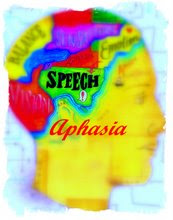More young people see a surge in strokes
Hospitalizations for ischemic stroke — the most common type — rose 51 percent in boys and men 15 to 34 years old between 1994 and 2007, and 17 percent in girls and women in the same age group, according to a recent study by the U.S. Centers for Disease Control and Prevention.
Published: Thursday, March 31, 2011 at 8:47 a.m.
Last Modified: Thursday, March 31, 2011 at 8:47 a.m.
Last Modified: Thursday, March 31, 2011 at 8:47 a.m.
SANTA CLAUS, Ind. — Bethany Miller was getting ready to shower at her Indiana home after high school basketball practice in January when her left leg grew weak, then numb. Soon, her entire left side was numb, and she slid to the tile floor.
What is a stroke?
A stroke occurs when a blood vessel that carries oxygen and nutrients to the brain is either blocked by a clot or bursts. When that happens, part of the brain cannot get the blood (and oxygen) it needs, so it starts to die. An ischemic stroke is caused by a clot obstructing the flow of blood, and a hemorrhagic stroke is caused by a blood vessel rupturing and preventing blood flow.Signs of stroke
— Sudden numbness or weakness of the face, arm or leg, especially on one side of the body
— Sudden confusion, trouble speaking or understanding
— Sudden trouble seeing in one or both eyes
— Sudden trouble walking, dizziness, loss of balance or coordination
— Sudden severe headache with no known cause
Ways to avoid stroke
— Check blood pressure and keep it under control.
— Check cholesterol and get high cholesterol under control.
— Stop smoking or don’t start.
— Keep diabetes under control.
— Be particularly vigilant if you’ve had a transient ischemic attack, a “warning stroke” that produces symptoms but no lasting damage.
— Eat well, exercise regularly and maintain normal weight.
— Don’t abuse alcohol or use drugs.
Risk factors particular to women younger than 55
— Migraines:Recent research shows that women who suffer from migraines can be up to 10 times more likely to suffer a stroke.
— Birth-control pills:Women who take even a low-estrogen pill may be twice as likely to have a stroke than those who don’t.
— Hormone replacement therapy:Women who take hormone replacement therapy may have a slightly increased stroke risk.
— Autoimmune diseasessuch as diabetes or lupus
— Clotting disorders:Women who’ve had more than one miscarriage may be at higher risk for blood clots, which can increase their chance of a stroke. Other signs of a possible clotting disorder include a previous history of clots in the legs.
Sources: American Stroke Association and Courier-Journal reporting
Rushed to Jasper’s Memorial Hospital, doctors gave the high school freshman a startling diagnosis: She’d suffered a stroke.
“I didn’t think a 15-year-old could have one,” Bethany said.
Bethany is part of a disturbing trend — a sharp increase in stroke hospitalizations among Americans younger than 35, including teens.
Hospitalizations for ischemic stroke — the most common type — rose 51 percent in boys and men 15 to 34 years old between 1994 and 2007, and 17 percent in girls and women in the same age group, according to a recent study by the U.S. Centers for Disease Control and Prevention.
During the same period, hospitalizations because of stroke declined in the elderly.
The findings bolster a study by University of Cincinnati researchers presented last year that showed the percentage of 20- to 45-year-olds having strokes rose from 4.5 percent in 1993-94 to 7.3 percent in 2005.
“We were seeing a rash of younger people coming in having strokes,” said Dr. Brett Kissela, author of that study and Cincinnati neurology chairman.
Risk factors
Researchers aren’t sure why the numbers are increasing, but they suspect that factors such as rising obesity and high blood pressure in the young are big contributors, as well as improved medical technology that is leading to more stroke diagnoses.
Doctors also pointed to other causes in the young — undiagnosed heart problems, smoking, drug use and birth-control pills.





0 comments:
Post a Comment